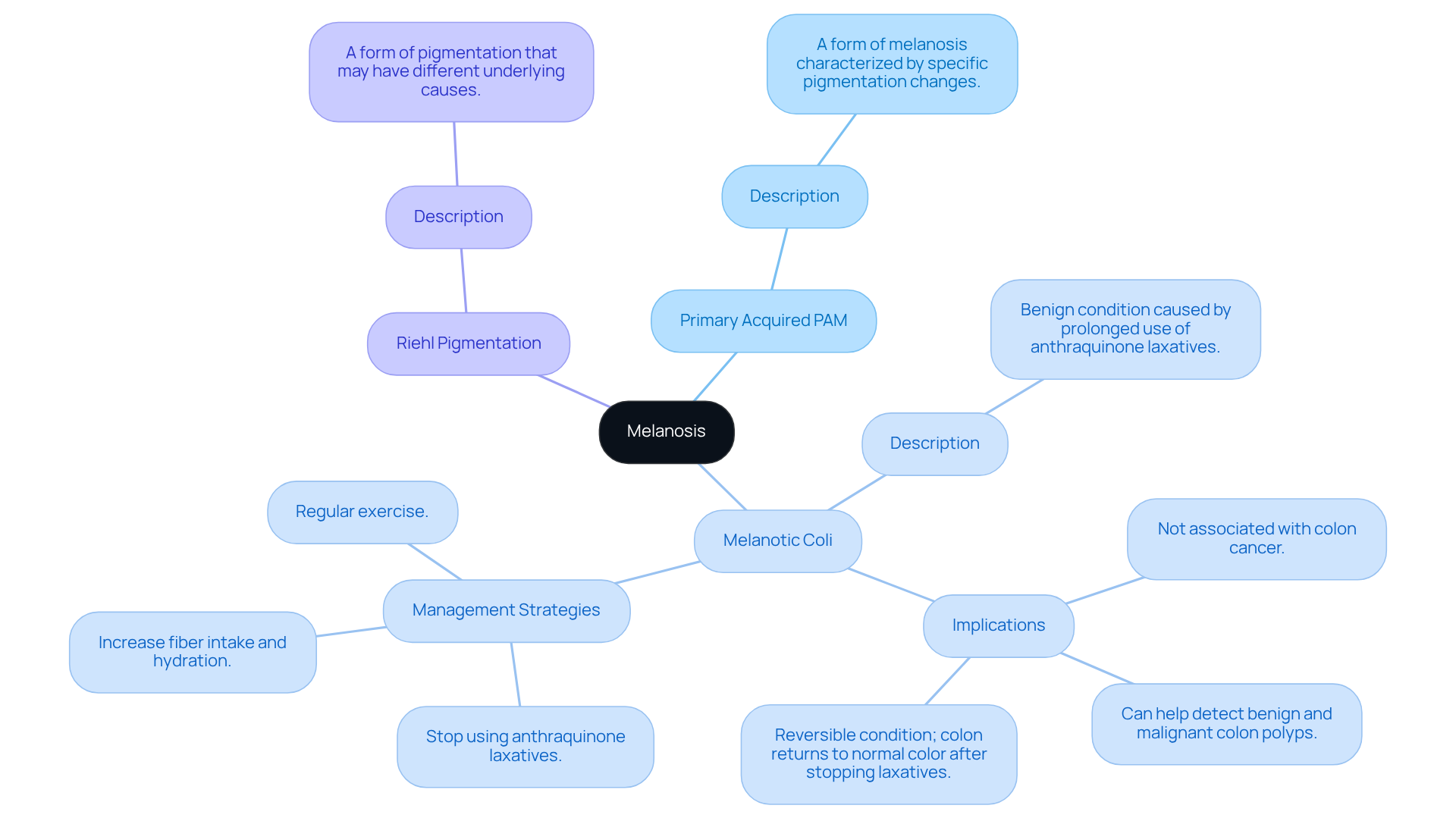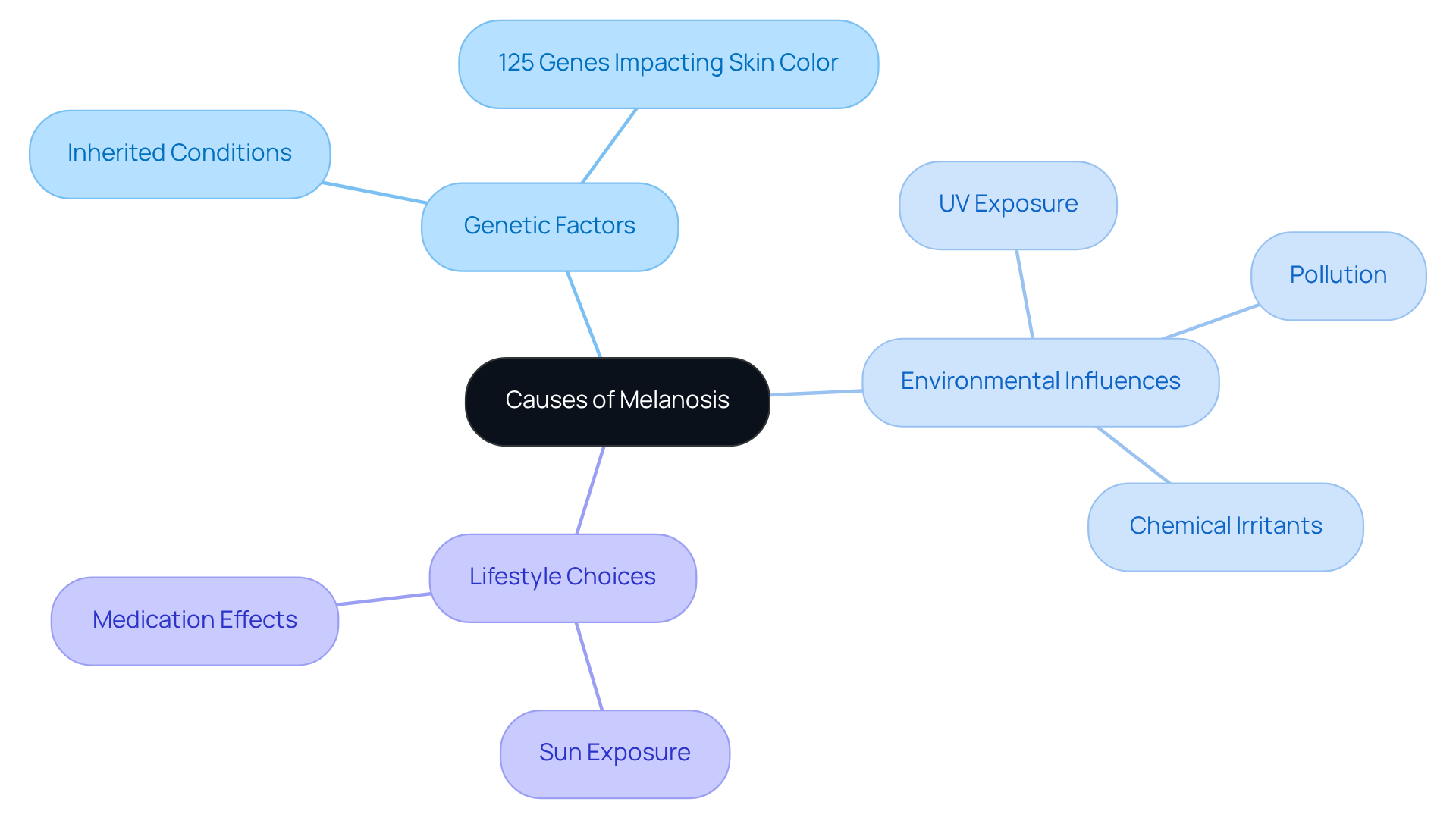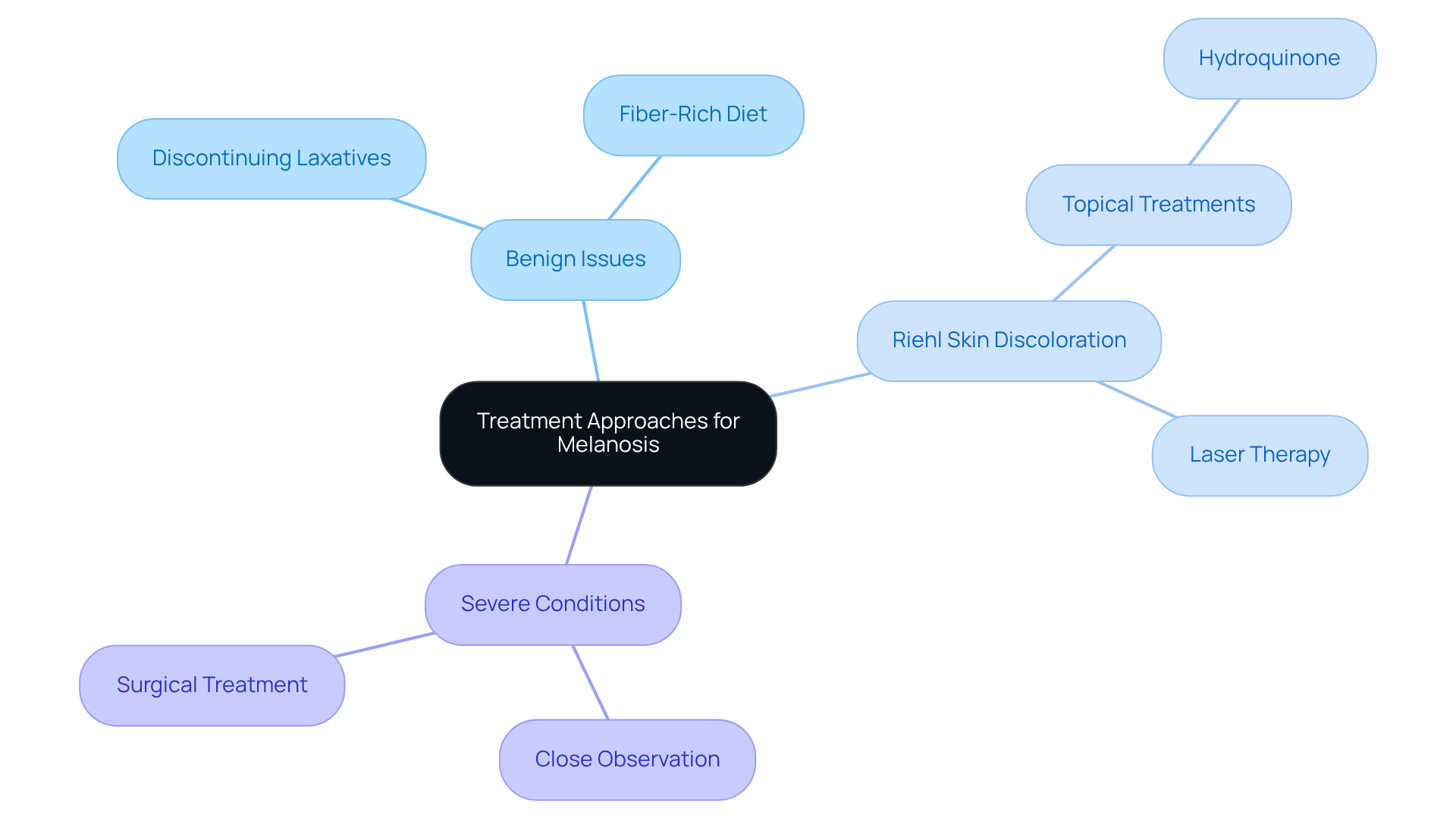Posted by: Northwest Eye in General on July 18, 2025
Overview
Melanosis can be concerning, as it is characterized by an unusual accumulation of melanin in the body’s tissues. This condition may indicate underlying health issues, and we understand that you might have questions about what this means for you. Depending on the type of melanosis, specific treatment approaches may be necessary.
It’s important to recognize the various causes of melanosis, including genetic factors and environmental influences. Understanding these aspects can provide clarity and reassurance. There are several treatment options available, tailored to your individual condition and needs. These may include:
- Dietary changes
- Topical therapies
These can make a significant difference in your health and well-being.
We are here to help you through this process, ensuring you feel supported every step of the way. Remember, you are not alone in this journey, and seeking care is a positive step towards better health.
Introduction
Melanosis is a condition characterized by an abnormal buildup of melanin in the body, which can understandably raise concerns regarding health. We recognize that this phenomenon can be alarming, not just for patients but also for healthcare providers, as it may indicate underlying issues that range from benign to more serious conditions like melanoma.
What leads to the development of melanosis, and how can individuals effectively manage it? This article aims to explore the causes, symptoms, and treatment options associated with melanosis, offering insights that empower you to take control of your skin health. We are here to help you through this process.
Define Melanosis: Overview and Significance
Melanosis refers to a medical condition characterized by an unusual accumulation of melanin or other pigments in the body’s tissues. We understand that discovering this condition can be concerning, and it’s important to know that it can present in various forms, such as:
- Primary acquired PAM
- Melanotic coli
- Riehl pigmentation, among others.
The significance of skin darkening goes beyond aesthetics; it can indicate underlying health issues or lead to complications like melanoma. We want you to feel reassured that understanding melanosis is crucial for both patients and healthcare providers. This understanding ensures timely diagnosis and the development of .
We are here to help you through this process, addressing any questions or concerns you may have. Remember, you are not alone in this journey.

Explore Causes of Melanosis: From Genetic Factors to Environmental Influences
Melanosis can develop from various causes, and we recognize that this can be concerning. Factors such as genetic predispositions, environmental influences, and lifestyle choices all play a role. Genetic factors may include inherited conditions that impact pigment production, with studies suggesting that skin coloration is affected by 125 genes. Environmental influences, such as UV exposure, pollution, and chemical irritants, can also contribute to this condition. For instance, UV radiation generates free radicals that stimulate melanocytes to produce pigment, resulting in heightened pigment production as a protective response. It’s common to feel worried about the implications of extended sun exposure, which has been linked to increased pigmentation levels, highlighting the skin’s adaptive response to UV radiation.
Furthermore, certain medications, such as laxatives, have been linked to conditions like melanosis coli. We recognize that individuals with darker skin tones often have , which can influence their susceptibility to various skin conditions. Understanding these varied causes is essential for you, as it allows for the reduction of risks and informed health choices. By recognizing the interplay between genetic and environmental factors, you can better navigate your eye health and overall well-being.
Case studies, such as the effectiveness of oral tranexamic acid in treating melasma, further illustrate the practical applications of understanding skin discoloration. Integrating expert perspectives, like those from Jean Krutmann, can also improve your comprehension of the processes behind skin discoloration and its causes. Remember, we are here to help you through this process and support you in making informed decisions about your health.

Examine Treatment Approaches for Melanosis: Options and Considerations
Caring for skin discoloration is tailored to your unique needs and the underlying causes. We understand that conditions like of the colon can be concerning. For benign issues, the primary approach often involves:
- Discontinuing certain laxatives
- Embracing a fiber-rich diet
This not only supports bowel health but may also lead to significant improvements.
In cases of Riehl skin discoloration, effective management might include topical treatments such as hydroquinone or advanced options like laser therapy, which have shown promising results in reducing pigmentation. We want you to feel reassured that there are options available.
For more severe conditions, such as primary acquired pigmentation (PAM), close observation is essential. Surgical treatment may be necessary to prevent progression to melanoma, and we are here to guide you through this process.
Research indicates that dietary changes can play a vital role in the management of melanosis. For instance, a study revealed that individuals adopting a Mediterranean diet experienced a notable decrease in symptoms. We encourage you to consult with your healthcare provider to create a personalized treatment plan that addresses your specific condition and needs. Remember, you are not alone in this journey, and we are here to support you every step of the way.

Conclusion
Understanding melanosis is essential for recognizing its implications on overall health. This condition involves an abnormal accumulation of melanin or other pigments in the body. By delving into its various forms and associated health risks, you can navigate your journey toward effective management and treatment. This knowledge empowers both you and your healthcare provider to engage in proactive approaches for timely diagnosis and care.
Several key factors contribute to melanosis, including:
- Genetic predispositions
- Environmental influences
- Lifestyle choices
Recognizing these causes is important, as they can inform better health decisions and risk reduction strategies. Treatment options range from:
- Dietary adjustments
- Topical therapies
- More advanced interventions
This underscores the need for personalized care plans.
Ultimately, understanding melanosis is not merely about addressing skin discoloration; it reflects a broader awareness of health and well-being. We encourage you to seek guidance from healthcare professionals, embrace informed choices, and consider the significance of your skin health in the context of overall wellness. By fostering this understanding, you can take meaningful steps toward managing melanosis and improving your quality of life.
Frequently Asked Questions
What is melanosis?
Melanosis is a medical condition characterized by an unusual accumulation of melanin or other pigments in the body’s tissues.
What are the different forms of melanosis?
Melanosis can present in various forms, including primary acquired PAM, melanotic coli, and Riehl pigmentation, among others.
Why is it important to understand melanosis?
Understanding melanosis is crucial because it can indicate underlying health issues and may lead to complications such as melanoma. This knowledge helps ensure timely diagnosis and appropriate management strategies.
How can melanosis impact health?
The skin darkening associated with melanosis can be a sign of underlying health problems and may lead to serious complications, including melanoma.
What should patients do if they have concerns about melanosis?
Patients should seek guidance and support from healthcare providers to address any questions or concerns they may have regarding melanosis.






